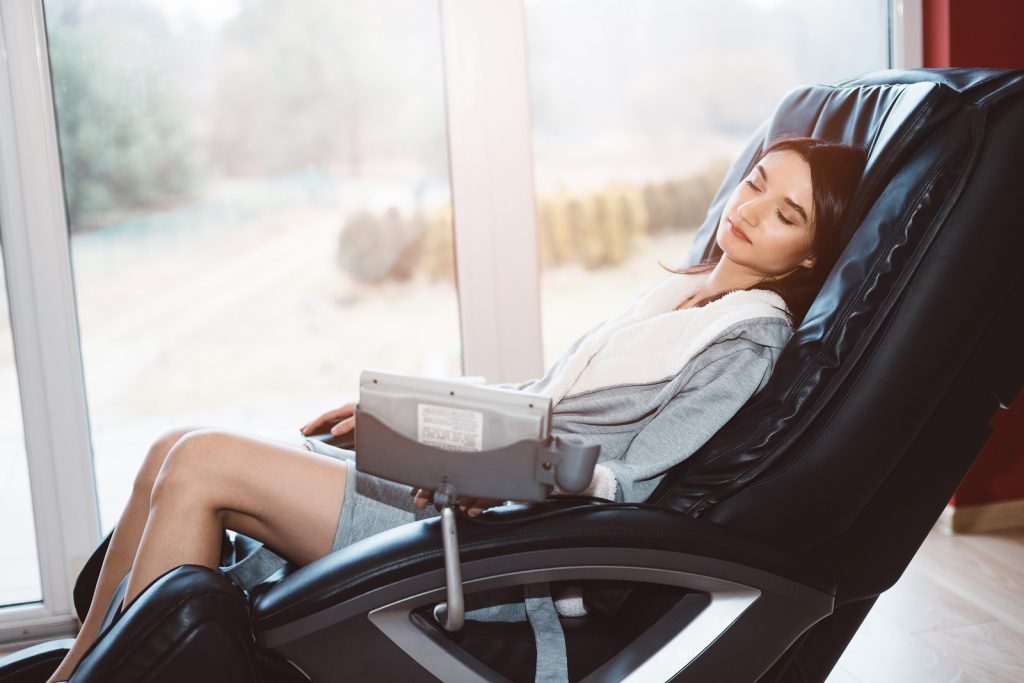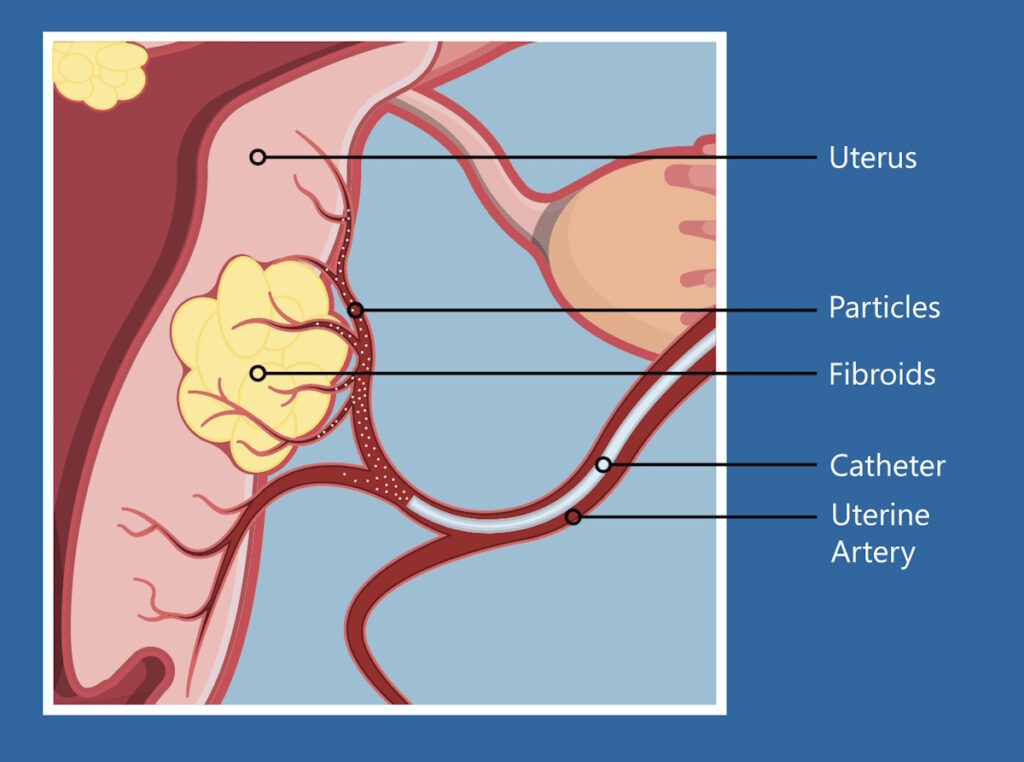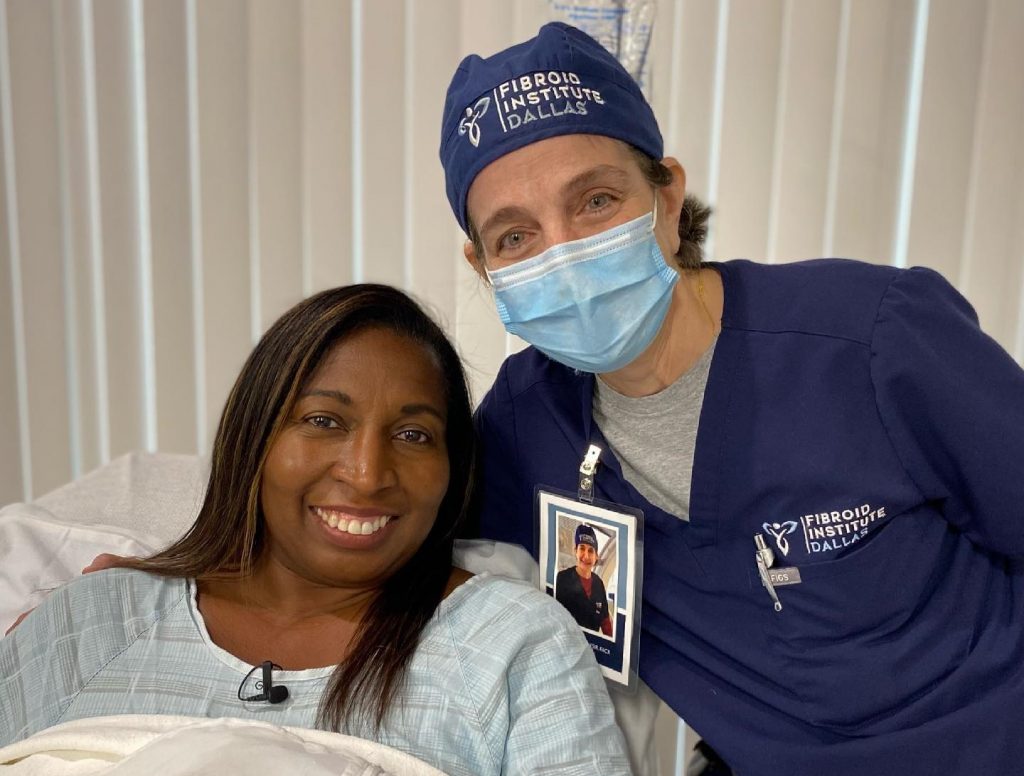It’s only natural for women to experience stress when they have been diagnosed with uterine fibroids. This is especially true if you’ve been suffering for years without relief and are anxious over the possibility of a lengthy fibroid surgery. Surprisingly, there is a connection between stress and fibroids. Lower your stress levels, and you may find relief. Become too stressed, and the spike in your hormone levels could encourage fibroid growth.
Leading a stress-free life may not prevent you from developing uterine fibroids. It is estimated that 70 to 80 percent of all women develop these noncancerous growths between 35 and 54, with or without stress as a factor. But the connection between stress and fibroids is real. Often, women report that feelings of stress and anxiety disappear after noninvasive fibroid treatment. Many even say their symptoms were less severe leading up to treatment because of how they learned to manage stress.
Can Stress Cause Uterine Fibroids to Grow?
In a word—yes. We all experience stress. Some are minor, others are major, and it’s normal just to be stressed. But chronic stress affects your health in numerous ways, causing everything from sleeplessness to depression, headaches, cardiovascular and reproductive issues, heart disease, diabetes, high blood pressure, and even fibroid growth.
Several factors cause uterine fibroids to grow, and there is still plenty that we don’t know. But what we do know is that they are sensitive to hormone levels—specifically, estrogen and progesterone. This is why fibroids tend to grow more during childbearing years because hormone levels are typically at their highest during this time. For some women, stress can even play a part in causing irregular periods. Stress is the body’s biochemical response to life challenges. To handle stress, the brain tells our body to produce extra hormones. As a result, hormone levels rise, which stimulates fibroid growth and causes symptoms to flare up.
Stress can cause fibroids that were once asymptomatic to grow at an alarming rate. Depending on your situation, you may have one or several. In addition, they could all differ in size and either stay that way or grow at different rates.
The sheer weight and location of fibroids cause them to press against organs and nerves, leading to:
- Heavy menstrual bleeding
- Debilitating cramps, pelvic pain, and pressure
- Periods that last longer than a week
- Pain during sex
- Back or leg pain
- Urinary frequency
- Excessive fatigue
- Bloating or swelling in the lower abdomen
- Constipation, diarrhea, and rectum discomfort
How Can I Manage My Stress and Anxiety?
Many people think that stress and anxiety are the same thing. They are not. While stress is the body’s reaction to a threat, anxiety is the reaction to the stress. The good news is that you can manage both at the same time.
Below are a few options to consider for reducing stress with uterine fibroids:
1. Relaxation techniques — There are a variety of techniques to consider in slowing your mind and body down physically, mentally, and emotionally. These include deep breathing, engaging in enjoyable activities such as working out or listening to calming music. Massage is also a great way to limit stress.

2. Lifestyle changes — Stress levels can be improved by making a few lifestyle changes that also help lessen your chances of painful uterine fibroids. Engage in daily exercise. Stretching, yoga, swimming, biking, walking, or light jogging are a few options. Regular exercise may ease anxiety by releasing endorphins, helping you relax, and improving your sleep. Eat more fruits, especially citrus, and vegetables. Foods such as red, processed meat, salty foods, and certain carbohydrates should be avoided as they contribute to stress and anxiety. These foods also lead to excess weight and fibroid growth.
3. Social support — There is a community of women who have suffered from painful fibroids who are more than willing to offer support, encouragement, and answer questions about how to manage stress. Having an outlet to share your emotions can help tremendously in the pursuit of a life without fibroids.
4. Develop coping mechanisms — Beyond the fibroids themselves, it’s important to take note of stressful triggers in your life and eliminate them as much as possible. When stress is unavoidable, coping mechanisms can help you manage those situations better.
Have You Considered UFE?
The thought of going through fibroid surgery can create stress and fear of the unknown. How long will the recovery be? How will my body react? Is it safe? Will I be in pain? All of this creates an even greater link between stress and fibroids. In many cases, fibroid surgery is still the best treatment option. However, there is also an effective and minimally invasive treatment option called Uterine Fibroid Embolization (UFE). UFE does not technically remove uterine fibroids in the way surgery does. But it is more than 90% effective in relieving the fibroid symptoms by cutting off blood flow to all fibroids, causing them to shrink and die.

UFE is low risk, no incision, and faster than some of the other options. And the best part is that it is an alternative to invasive surgeries such as a hysterectomy and myomectomy. With UFE, small particles are introduced into the uterine arteries and fibroid vessels, blocking the blood flow to the fibroids. The procedure will last about one hour, and you will be asleep for the procedure. You can resume light activities as soon as you feel up to it.
Advantages of UFE include:
- Covered by most major medical insurance
- No hospital stay
- Treat multiple fibroids at once
- No incision or vaginal access, just a small puncture on your wrist
- Recovery period is as little as one week in many cases
- Over 90% effective in reducing symptoms
In some cases where fibroid surgery is unavoidable, UFE can help prepare a patient for a hysterectomy or myomectomy. It can make those surgeries easier for both the patient and surgeon by reducing blood loss and improving visualization.
Fibroid Treatment without Surgery: Schedule a Consult
The connection between stress and fibroids is a real thing. One way to manage the stress of your situation—especially if you’re concerned about treatment options—is to have an open conversation with your doctor. Many times, women find that they don’t need to have fibroid surgery at all. Uterine Fibroid Embolization (UFE) is the gold standard in non-surgical fibroid treatment.

Dr. Slonim founded the Fibroid Institute Dallas and the Fibroid Free movement to relieve women of stressful fibroid symptoms and educate them on treatment options other than a hysterectomy. As 5-star rated fibroids doctor, she is a national advocate for fibroid treatment without surgery. Dr. Slonim is voted as a top doctor in D Magazine’s Best Doctors, listed in Super Doctors by Texas Monthly, and honored with the Women in Business Award by the Dallas Business Journal.
Our fibroid doctors are board-certified interventional radiologists and experts who are passionate about helping women become #FibroidFree. Dr. Suzanne Slonim and Dr. John Fischer are among the most experienced experts, 100% focused on fibroid treatment in the Dallas and Houston metro areas.
Request a free 10-15 minute phone screening to determine if you are eligible for UFE. After the screening, if you qualify for UFE, you can schedule your onsite or telehealth consultation.
State-of-the-art equipment at our Fibroid Institute Dallas North office offers availability of onsite ultrasound and MRI imaging, allowing for a much more efficient evaluation of each patient’s candidacy for UFE. A patient can have her MRI and be seen immediately afterward, even possibly get scheduled during the same visit for her UFE, depending on insurance. Most major medical insurance providers cover the cost of UFE.
At Fibroid Institute, we are dedicated to helping you become #FibroidFree. Get started now by calling or completing the form below.
Prior to starting any new treatment or questions regarding a medical condition, always seek the advice of your doctor or other qualified health provider. This information is not a substitute for professional medical advice.
Fibroid Institute Dallas serves the DFW area including Grand Prairie, Arlington, HEB, Fort Worth, Hutchins, Irving, Garland, Mesquite, Richardson, Addison, Carrollton, Plano, Frisco, McKinney, Allen, Dallas, Duncanville, DeSoto, Cedar Hill, Lancaster, Cockrell Hill, Highland Park, University Park, Park Cities, and all of North Texas.

